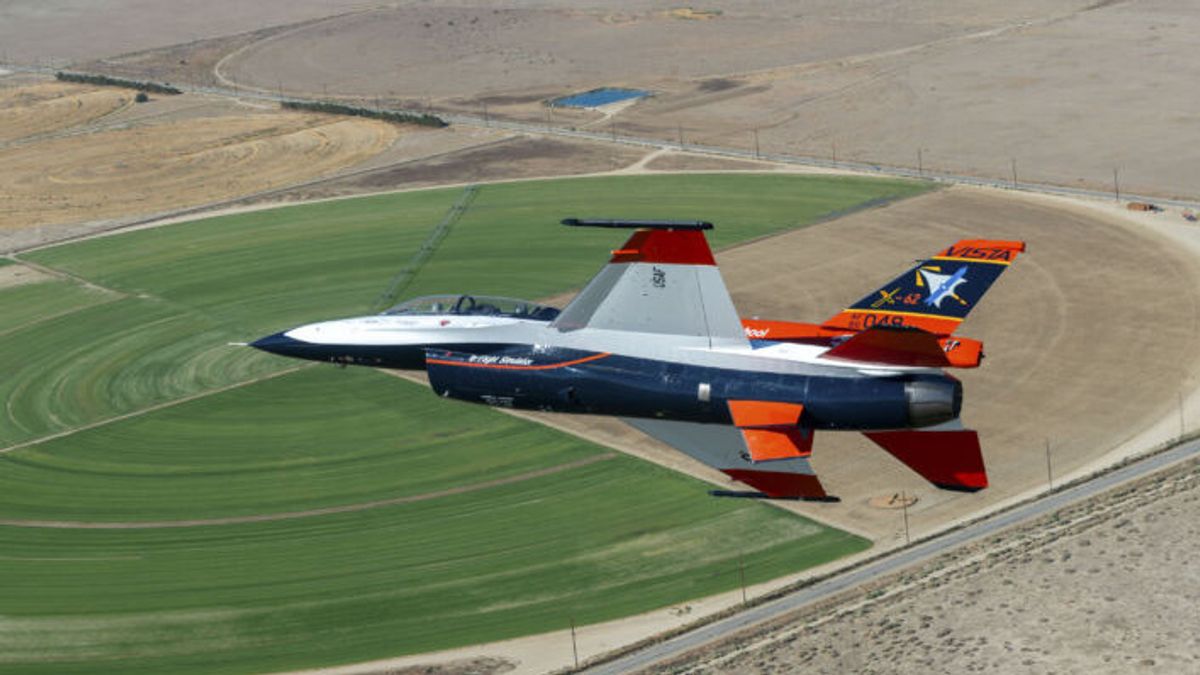JAKARTA - The Artificial Intelligence (AI) algorithm developed by DARPA's Air Combat Evolution (ACE) program, the US Department of Defense science center, managed to fly the modified fighter jet for more than 17 hours in December last year.
The jet, Variable In-flight Simulation Test Aircraft (VISTA) or X-62A, took off from Edwards Air Force Base in California, USA. This achievement marks the first time AI has been used to fly tactical aircraft.
"We carried out several sudden attacks (take off and land) with many test points carried out on each surprise attack to test the algorithm under various initial conditions, against various simulated enemies, and by means of simulated weapons capabilities," said program manager DARPA for ACE, Lieutenant Colonel of the Air Force Ryan Hal Hefron.
"We didn't experience any major problems, but found some differences compared to simulation-based results, which are expected to take place from virtual to live," he added.
X-62 was developed by Lockheed Martin Skunk Works and Calspan Corporation for the US Air Force Test School.
Starting his life as an F-16D Block 30 with two seats and first flying in 1992, X-62 spent most of his time at Edwards Air Force Test Pilot School at AFB.
In 2021 the fighter jet was redesigned from NF-16D N which showed it was a special test plane, to X-62A which began to be developed in 2019 with the launch of the ACE program.
Modifications made on aircraft over the years allowed it to simulate other fixed-wing aircraft flight characteristics, making it an effective training platform for human test pilots as in the past and most recently, AI pilots.
The US Air Force describes X-62A as a test flight accelerator. Test teams can fly missions, land, and quickly update or change AI agents, then fly other test missions within hours, thanks to modifications made as part of the VISTA program.
DARPA envisions machine learning algorithms helping pilots fly and perform tactical maneuvers, with humans who will focus on combat orders, strategies, and firearms. This work involves developing new software and models.
During flight, a human pilot is on board, which can take over if necessary. DARPA also tests how human pilots interact with AI to check how well they trust machines to perform air battles automatically.
The aircraft used in the experiment is also equipped with sensors in the cockpit to track the pilot's physiological response while flying. DARPA believes the device can find out what scenario the AI pilot trusts or doesn't trust by monitoring their flight action and sensor data.
The agency will conduct similar experiments on test pilots flying the X-62 aircraft later this year, as quoted from various sources, Wednesday, February 15.
"Thanks to the extraordinary teamwork and coordination between DARPA, Air Force Test Pilot School, Air Force Research Laboratory, and our team of players, we have made rapid progress in Phase 2 in all areas of the ACE program," said Hefron.
"VISTA allows us to streamline the program by skipping the planned subscale phase and proceeding directly to full-scale implementation, saving one year or more and providing performance feedback in real flight conditions," he added.
The English, Chinese, Japanese, Arabic, and French versions are automatically generated by the AI. So there may still be inaccuracies in translating, please always see Indonesian as our main language. (system supported by DigitalSiber.id)









